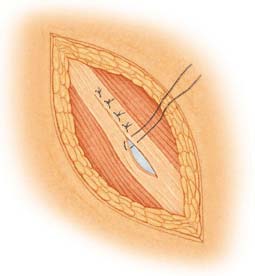Bone marrow transplantation is carried out in the treatment of hematological and oncological diseases. A good effect when transplantation of bone marrow is noted in patients with severe immunodeficiency. Gemopoietic cell transplantation is carried out during transplantation.
Content
Concept for bone marrow transplantation
 Bone marrow transplantation is used to treat many hematological, oncological and hereditary diseases, including sharp and chronic leukemia, lymphoma, a number of tumors, anemia, neuroblastoma, severe combined immunodeficiency.
Bone marrow transplantation is used to treat many hematological, oncological and hereditary diseases, including sharp and chronic leukemia, lymphoma, a number of tumors, anemia, neuroblastoma, severe combined immunodeficiency.
Bone marrow transplantation - bone marrow transplanting tissue, which contains up to 1% stem-forming cells and cells of varying degrees of maturity.
Patients are transplanted by hematopoietic stem cells, which in a healthy person are in the bone marrow - the hematopoietic fabric placed in the bones of the skeleton. Most of the bone marrow is contained in pelvic bones, chest and spine.
Hematopoietic stem cells are predecessors of all blood cells and immunity in the body. Being transferred to the patient even in small quantities, hematopoietic stem cells are able to fully restore blood formation and immunity.
Bone marrow transplantation is a procedure that allows cancer treatment with very high doses, primarily chemotherapeutic agents, but sometimes radioactive radiation. Since such treatment constantly destroys the bone marrow, it is in principle that is impracticable, because the body loses the vital ability to produce blood cells. However, if after treatment in the body, re-introduce a healthy bone marrow, the bone marrow replacement and the restoration of its ability to heal. Therefore, bone marrow transplants allow therapy with high doses to cure a particular cancer when lower doses are powerless.
Types of bone marrow transplantation
There are two types of transplantation:
- Allogenic transplantation (donor bone marrow)
- Outdoor transplantation (transplantation of bone marrowing cells)
Outdoor transplantation is not one in the true sense of the word and is sometimes called a supporting bone marrow transplant or stem cell. With allogeneic transplantation, the donor should be compatible with patients with HLA blood antigen. In case of incomplete compatibility of the donor and the patient, the risk of complications after the bone marrow transplantation procedure significantly increases.
The purpose of the bone marrow removal is to obtain the predecessors (stem cells) contained in it, which in the process of development are then converted into various blood components. Prior to the beginning of any intensive treatment, the bone marrow is removed from the femur bones of the patient or donor, after which they are frozen and stored before use. This is called extraction. Later, after completion of chemotherapy in combination with or without radiotherapy, the bone marrow is introduced back to the body drip method, like blood transfusion. The brain circulates in the body with blood flow and, ultimately, settles in the cavities of the bones, where its growth begins and the blood formation process is renewed. If everything goes well, the brain is attached, and the patient recovers.
Indications for bone marrow transplantation:
- Oncohematological diseases (leukemia, lymphoma, plasmocyte, myelodisplasia, myelofibrosis, etc.)
- Non-tauchery blood diseases (for example, severe aplastic anemia)
- Many solid tumors
- Genetic diseases of the immune system (for example, immunodeficiency), metabolism (for example, accumulation diseases), blood system (for example, thalassemia)
Complications of bone marrow transplantation
But two threats are on the way of recovery. The first is the ability to rejection by the organism of the transplant. So that this does not happen, the protective resistance of the body is suppressed by powerful medicines. The second threat is that for two three postoperative months, the patient's body is almost deprived of the immune system. The slightest infection can become fatal. To avoid infection, the patient is placed in a special ward with special measures of protection, it is isolated from the outside world.
Even after leaving the hospital, careful observation is installed behind the patient, and it must attend it for regular checks. On the normal recovery of the immune system after transplantation goes about a year, but if the patient's well-being worsens, it may be necessary to re-hospitalize.









